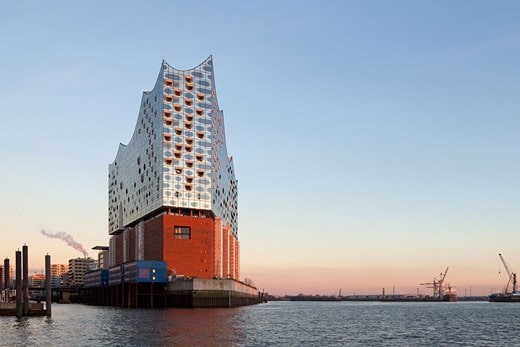Solution provider

The global climate crisis caused by carbon emissions is a key threat to society and our planet. Danfoss’ energy-efficient and climate-friendly solutions enable a cost-effective green transition.
Case
District heating
District energy
Energy efficiency
+3


The global climate crisis caused by carbon emissions is a key threat to society and our planet. Danfoss’ energy-efficient and climate-friendly solutions enable a cost-effective green transition.
Add the case to your visit request and let us know that you are interested in visiting Denmark
Pursuing energy efficiency is essential if we are to reduce greenhouse gas emissions and energy costs for consumers while reducing our energy dependency at the same time.
Like many cosmopolitan cities dotted across the globe, Hamburg is redeveloping its inner-city port area into a new urban quarter that is attractive to work, live and play in. Known as HafenCity, which loosely translates to ‘port city’, the new development aims to future-proof itself against any potential challenges and serve as a model for what environmentally and economically sustainable European waterfront cities can look like in the 21st century. Therefore, superior urban planning, architectural quality, sustainability, and innovative approaches are critical factors to ensuring the success of the port’s re-design.
The ambitious, large-scale transformation began at the turn of the century and construction is expected to conclude by 2030. Currently, HafenCity consists of over 3,000 residential units and 14,000 people who work there. Once completed, Hamburg’s inner-city area will have grown by 40% and up to 80,000 visitors are expected to pass through HafenCity on a daily basis.
Securing the kinds of cities the planet needs will only succeed if appropriate infrastructure and economic parameters are in place that can shape lifestyle and commercial patterns sustainably. For HafenCity, a key aspect of the challenge was ensuring a green heating supply that could adequately meet the energy requirements for the different types of buildings found in the new quarter, which include office buildings, flats, social housing, cultural institutions, retail, and leisure spaces. In addition, the heating system had to not only make environmental but also economic sense.
For HafenCity, the solution to the challenge of providing a sustainable heating supply that could adequately meet the energy needs of its buildings was district heating. Given that approximately half of Germany’s overall energy consumption can be attributed to heating its buildings, selecting an environmentally friendly technology such as district heating in HafenCity helps secure the new quarter’s green credentials. Furthermore, the solution is timely, given that the majority of the country still relies on fossil fuels to heat its homes.
In essence, district heating systems make use of heat produced in multiple locations such as supermarkets, data centres, solar thermal etc., and distribute it through a network of pipelines to a large number of end users. Doing so ensures that heat that possesses little or zero value in one place e.g., surplus heat from industry, supermarkets, or data centres, can be transformed to high value in places where there is strong demand for heat. This is a key driver of sector integration and makes district heating a highly useful instrument to deploy to attain climate objectives.
Furthermore, given that district heating can utilise a number of different energy carriers (which is not the case for individual heating solutions), heat production is highly flexible. Offering the possibility to select different fuel and heat sources enhances security of supply and allows for the cheapest and/or greenest fuel to be selected, which is beneficial for companies, consumers, and the environment.
Hamburg possesses a slightly higher share of district heating than the national average, with approximately 19% of all households in the city supplied with district heating. This meant that HafenCity could connect all buildings to the two existing district heating networks in the city and combine this with decentralised, local heating distribution units rather than build new infrastructure, thus minimising costs. Two new combined heat and power plants located in the Oberhafen part of HafenCity supply additional heating, and a nearby copper refinery supplies surplus industrial heat generated from gas scrubbing. This means that rather than wasting the excess heat by discharging it into the Elbe River, as was formerly the case, it can now be used to provide a sustainable source of heating.
Broadly speaking, utilising district heating brings several benefits:
Furthermore, the equipment used to supply district heating ensures that every kilowatt of energy is used as efficiently as possible. The decentralised, modular local heating supply networks that HafenCity is connected result in greenhouse gas emission rates that are considerably lower than conventional fossil fuel solutions. In addition, the combination of heat and power ensures that surplus heat from the power plant is used to heat buildings in the HafenCity area instead of being wasted. This way, 90% of the primary energy can be utilised – a concept which could easily be expanded to other residential areas and cities. Compared to a conventional fossil fuel heat supply, by 2028, a minimum of 75,000 tonnes of CO2 will be saved. For each subsequent year, an additional 12,000 tonnes will be saved.[1]
Finally, in 2022, Germany’s coalition government decreed that where possible, every new heating system must utilise 65% renewable energy sources by 2024. Furthermore, the country aims to achieve carbon neutrality by 2045. The success of the district heating solution in HafenCity means connecting more buildings, including homes, across the country to a district heating network will aid Germany in achieving this target and weaning itself off imported fossil fuels.
[1] https://www.enercity-contracting.de/referenzen/hafencity